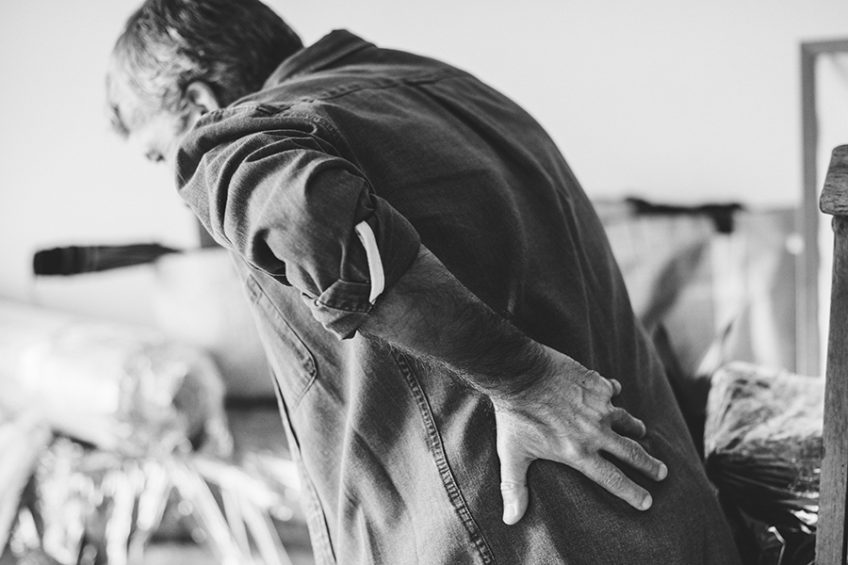The modern lifestyle with a lot of sedentary lifestyle, sitting on a chair, sitting on heels or driving contributes to the increase in the frequency causes when your back hurts.
To these is added the fact that we do not stand up straight and correctly even when we walk on the street, that we often carry our backpack or bag only on one side or we make a great effort lifting weights without protecting our spine.
Back pain affects more than half of adults over the age of 60 and a large proportion of adults up to the age of 60. Symptoms consist of frequent or transient pain, sharp or dull, continuous or intermittent back pain. If there is a damage to the nerves or the spinal cord, neurological symptoms may also occur, such as numbness, difficulty moving or muscle weakness.
CONTENT:
- Why does your back hurts?
- How you treat back pain
- What can you do if your back hurts and is not related to a condition but to your posture or lifestyle?
Why does your back hurts?
In addition to posture problems, back pain can be caused by countless conditions, such as:
- muscle contracture
- diseases of the spine
- joint disorders, rheumatic polymyalgia, fibromyalgia, arthritis (rheumatoid arthrosis)
- diseases of the hips, sacrum or pelvis
- conditions unrelated to the skeleton, spine or related muscles: renal colic, pancreatitis, tumors, pyelonephritis, aortic aneurysm, various infections (osteemielitis, spinal abscesses, infectious arthritis); angina, myocardial infarction, meningitis, esophageal obstruction, inflammation or esophageal neoplasia and thyroiditis (the latter conditions may be responsible, for example, for neck pain)
- accidents or traumas (dislocation, fractures caused by accidents or osteoporosis)
- congenital anomalies (spina bifida, lumbar S1)
- spinal cord compression.
In the list above there are also serious ailments, therefore, if we have pain in the neck or back then we must immediately consult a doctor, especially if we have not had such pain and we can not tell from experience if we have a contracture or stretching, I forced the spine or it’s really something else (kidneys, for example).
Only after a medical consultation and specialized investigations can the correct diagnosis be established with certainty. The doctor will assess the pain based on the symptoms described by the patient and the context in which they occurred or reappear or worsen.
How you treat back pain
First of all seriously, because it can be a symptom of a serious condition that evolves quickly (especially in the case of neck pain).
Second, at home, until you get to the doctor, you can take an over-the-counter painkiller or anti-inflammatory (paracetamol, ibuprofen). You must not exceed the permitted doses:
- In the case of paracetamol, the maximum dose in adults is 4 g / day, taken in fractions (dose 500mg-1g) over 24 hours
- In the case of ibuprofen, the maximum dose for an adult is 1.2 g divided into 3-6 installments over 24 hours
The doctor will be the one to determine the treatment and complementary therapies depending on the condition that causes back pain. As there are many conditions and complexes and especially since back pain occurs and persists in older people who already have certain diseases, a medical team will be needed to collaborate and manage the case and determine the drug treatment according to interactions.
What can you do if your back hurts and is not related to a condition but to your posture or lifestyle?
This is one of the happiest cases, because you still have a hard word to say and you can prevent the occurrence of more serious conditions such as herniated disc. So here’s what you can do:
- correct your posture on the chair, at the desk, on the sofa, in the car so as not to keep your muscles in tension, and the spine to be positioned upright;
- alternate the periods of standing down with those of standing and moving;
- exercise – gymnastics, physiotherapy or simply walk;
- hold your bag or backpack correctly so that the weight is distributed correctly on both shoulders;
- learn to bend correctly using your knees;
- give up making sudden, forced movements and lifting very heavy objects – either you ask for help or you are looking for technical solutions for lifting and moving objects;
- use massage, acupuncture, take relaxation baths and reduce the use of special creams that can cause local reactions on the skin.


